Welcome back to “How to Build an E-commerce Brand”! This series covers all the steps you need to start and grow an e-commerce brand. From identifying your brand to creating a product to utilizing a sales channel, we explore everything. This week, we’re explaining how to find your target audience for your e-commerce brand.
In late summer 2018, I decided to reboot my e-commerce business.
I had been selling products I chose solely based on profitability for the first few years of my e-commerce career, but this time I decided I wanted to do something that got me excited and that I’d have lasting interest in. That way, even if the business hit some bumps in the road — and all e-commerce businesses are going to hit bumps — I could still enjoy what I was doing.
I would create a new brand that was more focused on the customer community.
To do this, I needed to focus on building my audience rather than selling a product or utilizing a sales channel. Not only would this brand (hopefully) be profitable, but it would also be something I’d enjoy doing and have lasting interest in.
Why build an audience?
Finding an audience is more than just getting fans. It’s about creating a loyal following that is devoted to the products and services you put out.
For example, I only drive Chevrolets. It’s not that I don’t like Ford or Dodge, but my family always drove Chevys and that loyalty makes me prefer them. I’m Chevrolet’s audience.
The best part about building an audience is that you don’t need millions of fans to be successful. Tech guru and Silicon Valley legend Kevin Kelley believes that if you can get 1,000 true fans, you’re set.
In his essay 1,000 Fans he writes:
“A true fan is defined as a fan that will buy anything you produce. These diehard fans will drive 200 miles to see you sing; they will buy the hardcover and paperback and audible versions of your book; they will purchase your next figurine sight unseen; they will pay for the “best-of” DVD version of your free Youtube channel; they will come to your chef’s table once a month. If you have roughly 1,000 true fans like this (also known as super fans), you can make a living — if you are content to make a living but not a fortune.”
How to find your target audience
The first thing I needed to do was pick a niche.
For those of you who are hearing this term for the first time, a niche is a specific segment of a larger market. Typically, niches have less overall competition, which makes finding success a little easier.
For example, let’s say you want to focus on health and wellness. That’s far too broad of a market to get into. So to find a niche, you’d dig down a little more into, say, men’s body-building. But even that might be too broad. Instead, you can look for a niche within the niche — calisthenics, free weights, machine lifting, body-definition versus overall strength (strong man), etc.
You could then go even further and pick a subsect of that niche.
I chose Dungeons & Dragons (D&D), the tabletop roleplaying game, as my market. I knew it wouldn’t be easy to enter the broader market of D&D itself. After all, it was very competitive.
Going for the larger market, I would have to compete with Hasbro’s own marketing arm, Fandom.com, and other popular gaming/fan sites. Plus, there were some intellectual property considerations I had to take into account as well. So, I decided to narrow my focus quite a bit.
Within Dungeons & Dragons, there are five (arguably six) editions. I decided to focus on the latest: the fifth edition. Then, within that focus I chose people who wanted to use original, non-official Fifth Edition content.
“Narrow” is a relative term though. My niche audience is now more than 50,000 followers strong, all of whom read and use my content.
In this article, I want to share the steps I took to build my audience, which I later leveraged to create a solid passive income for myself and (eventually) monthly product releases on Amazon.
Choosing the Passion Method
Last week, I detailed the Passion Method for building an e-commerce brand. In the Passion Method, you find and build your target audience first. Then, with an audience in place, you create products for your audience and then sales channels.
Arguably, the Passion method is the hardest of the three methods I described. There is no “roadmap” to success with this method beyond patience and knowledge.
And it can sometimes take months — even years — to build an audience large enough to produce an income. It takes a lot of work and time to create an audience, especially with content marketing. And you have to be very knowledgeable, not just on the niche you’ve selected, but in other areas of marketing as well.
However, in my opinion, it is the most worthwhile.
Once you’ve built your audience, as long as you continue to communicate and work with them, they will continue to follow you. Plus, the value created through your efforts increases.
Another huge advantage of the Passion Method is that it doesn’t cost anything to get started. I started my blog DMDave.com using a free WordPress site and I marketed my posts using Instagram. Again, this cost me nothing except for my time.
Step 1. Find and pick your target audience
The most important part of the Passion Method is picking what you’re passionate about and determining how you will build an audience around that passion.
But what does it mean to be passionate about something? Here are a few questions you should ask yourself before you choose your topic:
- What topics are you knowledgeable about/have talents in?
- What topics do you feel that you have the most experience in?
- Are there some topics that you could feasibly create new content around every day?
- Are there some topics that won’t burn you out if they were the focus of your full-time job (and maybe even beyond that)?
- Do you and the content you create ideally represent of a topic that you care about?
Whichever topic or topics you end up choosing, make sure that it falls in line which each of those questions above.
Step 2. Check for profitability
While you aren’t going to go straight into creating a product or setting up a sales channel with the Passion Method, you do want to make sure that there is income to be made in your Passion (if earning an income with your e-commerce business is important to you, of course).
These are a few different methods for checking profitability. (Furthermore, I cover profitability and product creation a little more in Parts 3 and 4.)
Do a Google search
Google is your best friend when it comes to e-commerce. Not only is Google a tool to help others find you online, it’s also a great research tool. So, once you’ve chosen your passion, go to Google and start searching for competitors.
And it’s best to start with broad searches. For example, for my passion I’d type in “Dungeons & Dragons.” Right away, I get a lot of good information on the page.
The top search, of course, is the D&D Official Homepage from Wizards of the Coast (they’re the company that makes Dungeons & Dragons). I can click on their page and learn a little more about the type of content they create as well as the products they sell.

Check out the “People also ask” section
Just below that, Google has also shown me a “People also ask” snippet. These questions are important, too, because they can help me narrow my passion down to niche topics.
For example, the first question asks “What is the concept of Dungeons & Dragons”? That tells me that there are a bunch of people who want to know more about the game itself and how it works. To answer their question, I could create a blog or video series teaching the game.
The next question asks “What do I need to play Dungeons & Dragons?” That’s another topic I could cover on a blog or in a video, showing people the exact tools they need, and so on.
In the right column, Google shows us products related to Dungeons & Dragons. I can see that Target is selling a product called “The Essentials Kit.” Also, there is a cover to the “Monsters Manual” book.
Scrolling down gives us even more information. More product offers, Wikipedia articles, an article from the New Yorker talking about the resurgence of the game, and more.
If you want to gauge how popular websites are on Google, you can use a tool like SimilarWeb to predict the traffic a website gets each month. Simply go to SimilarWeb.com and type in the url for the website you want to view.
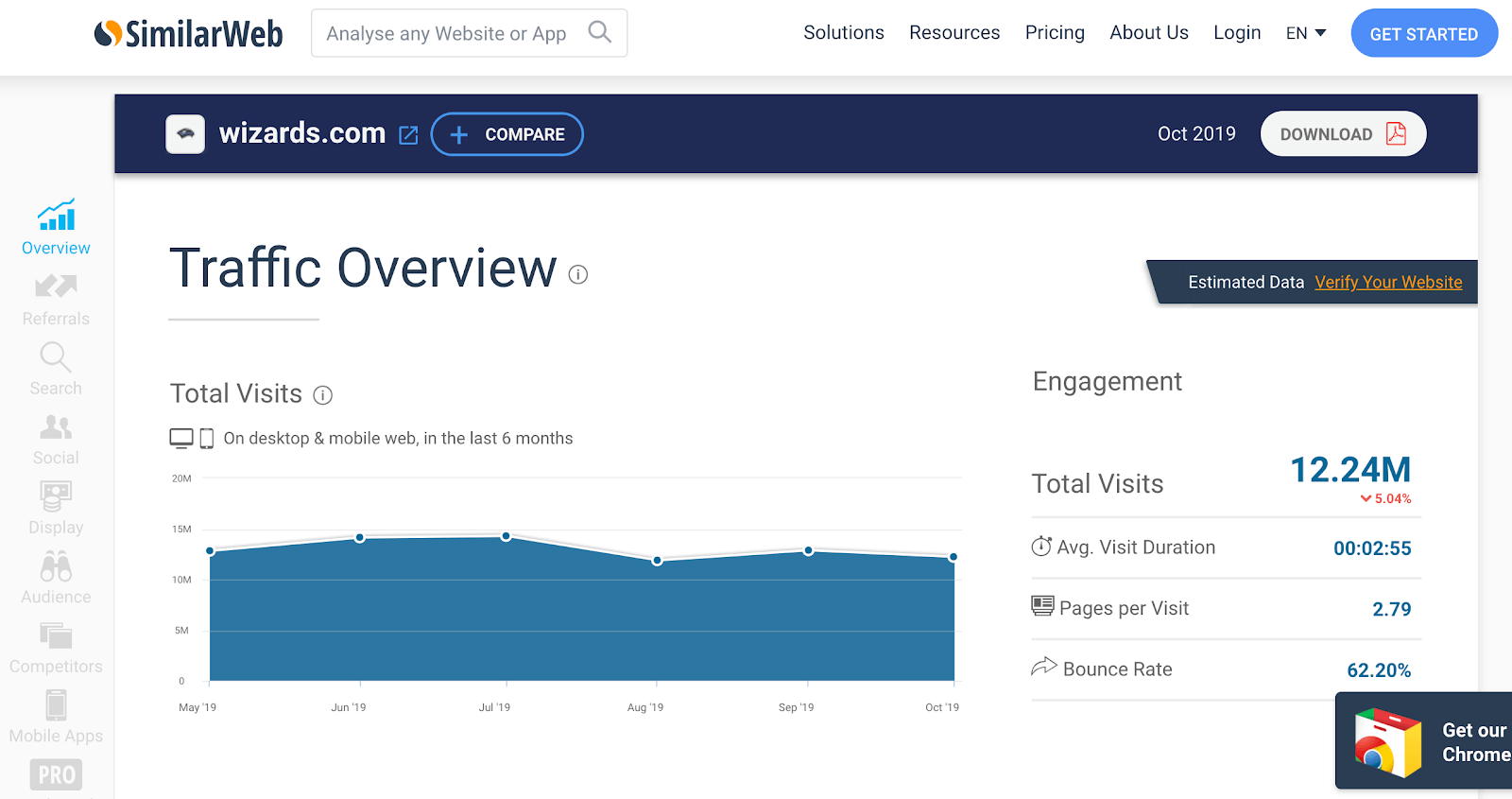
Check out products on Amazon
If Google is your #1 source for informational content, then Amazon is your best bet for shopping interests. After all, Amazon is a search engine too.
So, just like I did with Google, I went to Amazon and performed a search for “Dungeons & Dragons.” Again, we got a lot of great information.
First, we can see that there’s 10,000+ results for products related to “Dungeons & Dragons.” And right away there are sponsored ads for D&D-related products: carrying cases, bags, books. There are some official products, too. Those are made by Wizards of the Coast.
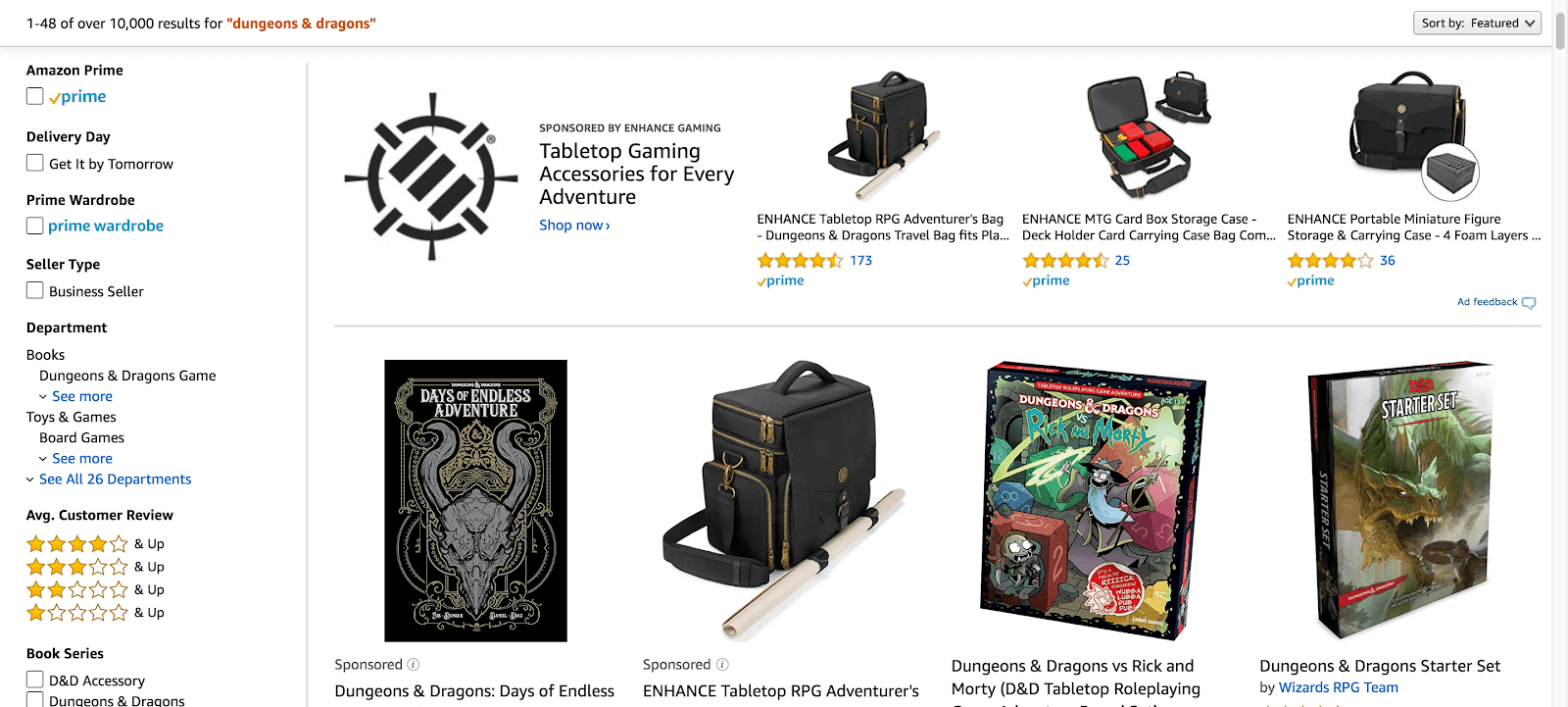
Overall, what’s most telling is that Wizards of the Coast isn’t the only one producing content for Dungeons & Dragons. Third party sellers can get involved, too.
If you really want to expand your research, you can use a little tool called Extension to see how well those products are selling. The tool takes Amazon’s Best-Seller Ranking values (BSR) and estimates the daily and monthly sales for all of Amazon’s products.
Jungle Scout’s Extension shows us that, on average, listings coming up for the search “Dungeons & Dragons” sell 553 units per month for an average of $31.81 each.
In other words, the average D&D product on Amazon earns over $17,000 per month. Not too shabby!
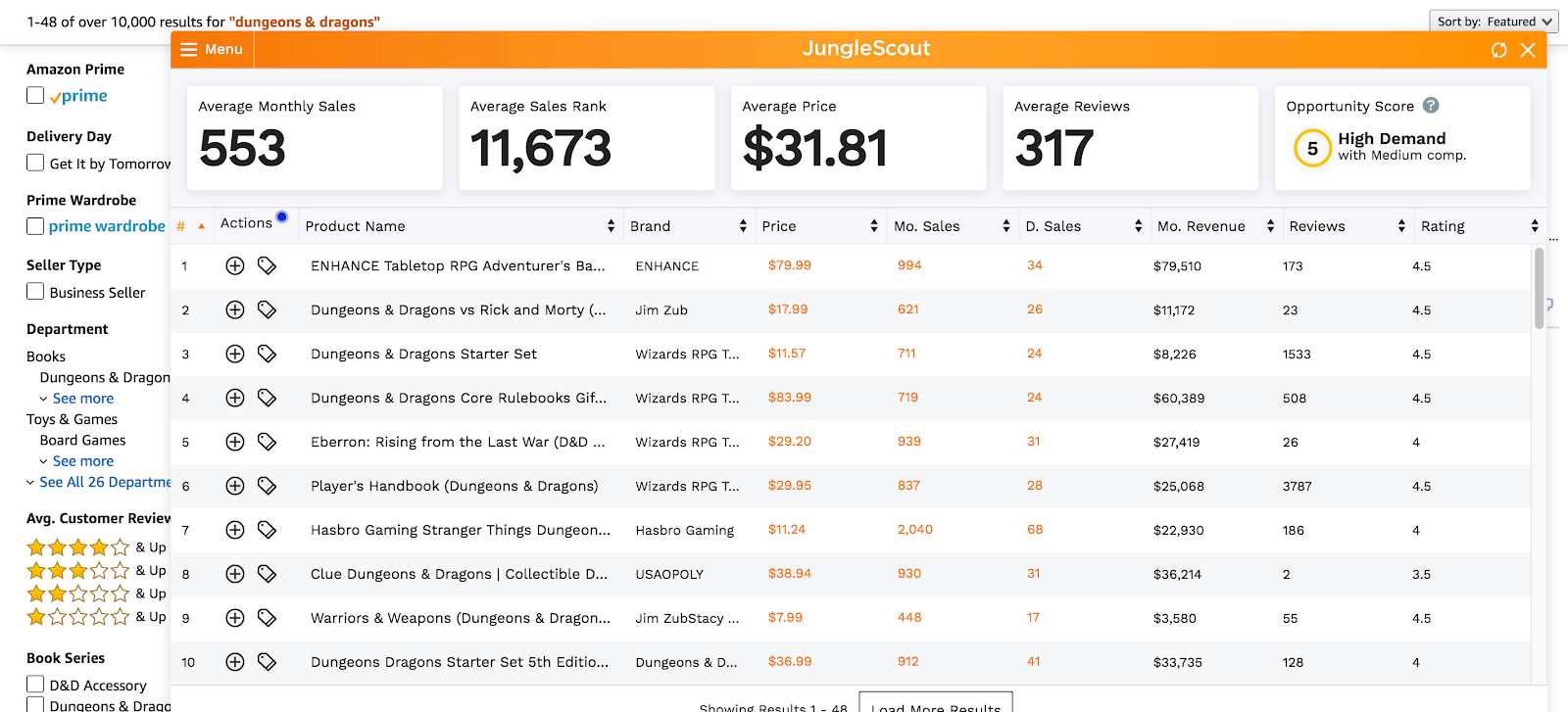
I’ll cover the Jungle Scout extension a little more next week when we look at the Profitability method.
Additional ways to check for profitability
Google and Amazon aren’t the only tools you have at your disposal for checking potential profitability. You can go on Patreon and check out creators who are making content in your niche, or look at Kickstarter to see what projects recently earned funds through crowdfunding.
Quora and Reddit are great spots to see what questions and topics people want to know more about as well. And of course, there is social media. If people are talking about it on Instagram, Facebook, Pinterest, etc., they’re likely interested in the topic.
Step 3. Create great content
The most important part of the Passion Method is content creation.
Content creation can be anything. Some folks create daily videos on YouTube. Others paint portraits and share them on Instagram or Pinterest. Folks like me write a blog or ebooks. And while you can use lots of different types of content, I recommend picking one method and sticking with it.
For example, I’ve done a few videos, but most of my fans know me as a writer, so that’s what I stay with.
Once you decide your content medium, you’ll need to start creating. Here are a few content creation tips that I recommend you adopt:
- Daily content wins. It might seem nuts to create something new every day, but understand this: your content doesn’t have to be a feature-length video or the entire content of a book. Whether it’s a 10-minute video or just a picture line drawing you shared on Instagram, bite-sized content works, too. In fact, since people tend to have short attention spans, brevity is often better.
- Create a feedback loop. Make sure you’re getting feedback on what you’re creating as soon as possible. And feedback doesn’t just mean comments or criticism. If you post something and it gets a ton of likes, it’s probably working. If you put up a post and get no traffic, likes, or comments, it’s probably a dud.
- Double down on what works. Once you’ve created your feedback loop, focus on creating more content similar to the posts that worked for you.
- Cut what doesn’t work. And, naturally, don’t spend too much time on something that’s not working. It isn’t worth your time or energy to focus on a dead idea.
Step 4. Get your content in front of many people as possible
It’s scary, putting your work in front of thousands of people. But trust me, it’s worth it.
Not only does it help market your brand, but the more people who see your work, the more feedback you can get. And yeah, a lot of times you’re going to get “trolls” who’ll pick your work apart. Overall, though, they’re in the minority.
Social media is ever-changing, however, and what’s popular today may not be popular tomorrow. Keeping that in mind, here are a few of my favorite spots to share my work:
- Instagram. I love Instagram. Below is one of my typical posts. In the main image, I put something eye-catching (or “scroll-stopping” as I like to call it) with a caption that says what it is. Then, in the caption below the image, I’ll write “link in bio” with a short description of what they can expect. This is primarily to promote my content, but gaining followers on Instagram also promises a repeat audience I can market to.
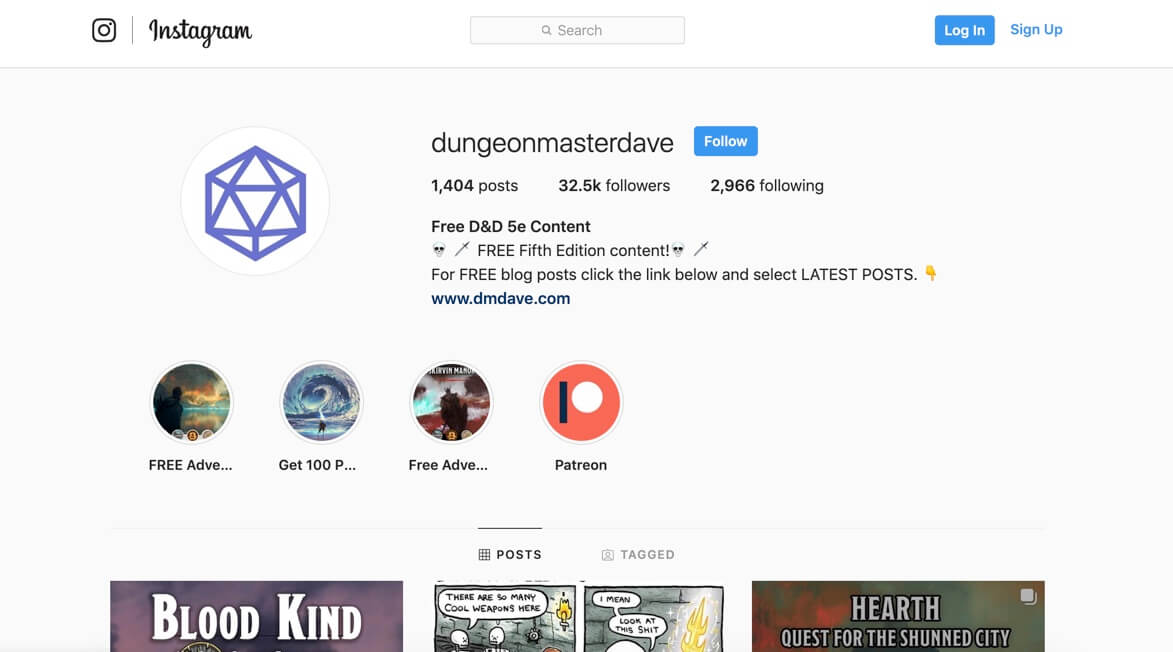
- Blog. Not only is my blog the place I create and content, but it also generates “organic traffic”. Organic traffic is comprised of people who click to my site after running a search on a search engine.
- Email Lists. My blog is set up to capture emails when people view my site. Once I have someone’s email, I can market to them as often as I like (or until they unsubscribe) using targeted emails that promote my content and build my audience.
- Reddit. Reddit is a little more harsh than most when it comes to trolls and negative feedback, but it is a great place to share your content once you find the right group.
Step 5. Do it again
This might seem redundant, but it’s extremely important.
Anybody can write a blog post. Anybody can paint a picture and post it. Everyone is capable of making a YouTube video. But what sets those who succeed from those who fail is that those who succeed don’t wait before they start the content creation cycle over again.
See you next week!
Hopefully you’re as excited as I am to start this series. Next week, we’ll discuss the profitability method in which you build your e-commerce business around a product concept.
Let us know in the comments how you’re doing with starting your brand and join our Facebook Group, Amazon Competitive Edge.
Good luck and see you next time.
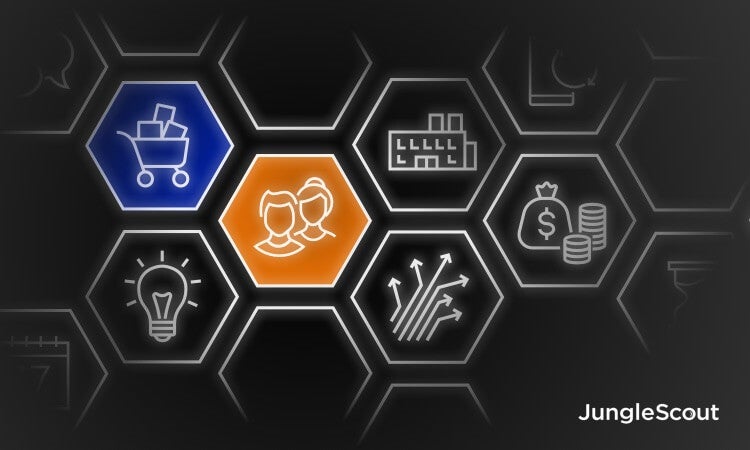

 1 Comment
1 Comment
One comment on “How to Build an E-Commerce Brand, Part 2: Find Your Audience”
Dave – I’ve just started reading your blogs – I love your writing style and it’s very informative to say the least. It’s a constant reminder that to be successful at anything ( or in this platform- amazon ) you need a plan and a process and a lot of other tools to bring it all together ..+ luck 🙂 – but as we know, you can create your own luck by doubling down .. I look forward to reading more